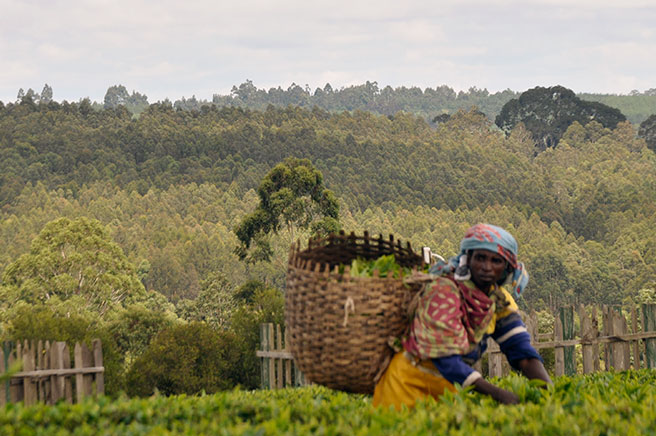In Tanzania, Conservation Benefits Communities

Since supporting the establishment of the College of African Wildlife Management (Mweka) on the slopes of Mt. Kilimanjaro in 1963, AWF has continued to work with the government of Tanzania and the U.S. Agency for International Development (USAID) to implement conservation efforts in northern Tanzania. Together, we have delivered a legacy of conservation and development impact in the Maasai Steppe and Kilimanjaro landscapes.
The successful completion of the Scaling Up Conservation and Livelihood Efforts in northern Tanzania (SCALE) project presents an opportunity to reflect on our achievements in the landscape. AWF pioneered its signature landscape approach to conservation in the Maasai Steppe, starting with investments in the core areas of Tarangire and Lake Manyara National Parks and expanding into surrounding community lands to enable wildlife movement through a large swathe of the system.
The park infrastructure of entry gates, visitor centers and road networks services millions of tourists each year, generating millions of dollars of revenue for Tanzania. But the wildlife of Tarangire and Lake Manyara depend on resources outside the park for survival. Wildebeest and zebra migrate to the short-grass plains of Lake Natron and Enduimet during the wet season. These migrations routes are mostly on community lands. The parks are dependent on surrounding Maasai communities allowing wildlife to graze alongside their livestock.
5 WMAs established
Wildlife Management Areas (WMAs) are a way for villagers to benefit from living with wildlife. AWF has established five WMAs covering 11,531 km2 of critically important habitat. Burunge, Enduimet, Makame, Randilen and Lake Natron WMAs were selected because of their strategic importance for wildlife and their ecological values, ensuring the integrity and resilience of the Tarangire–Manyara–Natron– Kilimanjaro ecosystem.
In addition to generating revenue for villages from wildlife-based tourism, WMAs address key threats to wildlife: habitat loss and poaching. The conversion of open grazing land to agricultural production and settlement severs the landscape and increases conflicts between humans and wildlife. Land-use plans are the bedrock of the WMA process, providing a means for communities to negotiate and agree how land will be managed and zoned in areas critical for wildlife movement.
Analysis reveals that the rate of conversion of land in the WMAs—4 percent in Burunge, for example—is significantly lower than outside—22 percent— meaning elephant, lion, wildebeest and giraffe are able to move more freely between core zones of protection. The poaching scourge is sadly another significant threat to wildlife in northern Tanzania. But poaching levels go down when there are scouts on the ground.
The 98 village game scouts in the WMAs risk their lives on a daily basis to protect wildlife moving through community lands. And evidence indicates it is working. While the overall elephant population in Tanzania declined by 60 percent between 2009 and 2014, the populations in the north have increased. In fact, the elephant population in the Tarangire–Manyara ecosystem increased by 64 percent. Decades of work are paying off in northern Tanzania, but more is needed to move the WMAs to a point of financial sustainability and enable the fledgling governance structures of community based wildlife management to mature.